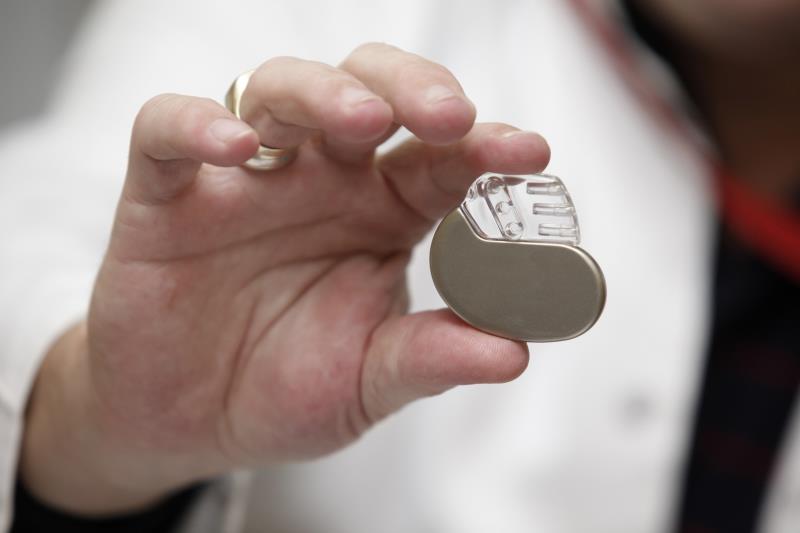From one heart to another: Second-hand pacemakers, ICDs bear no excess infection risk





Reusing a pacemaker or implantable cardioverter defibrillator (ICD) is safe and may improve a patient's chances of survival, with a recent study showing that the risk of infection is not significantly different between new and resterilized devices.
The finding has implications for reducing global disparities in care, given that patients in countries with limited resources lack access to cardiac implantable electronic devices, according to the investigators.
“Physicians in underserved areas cite unaffordable costs as the greatest impediment to offering device therapy to their patients. Indeed, the cost for a new pacemaker generator has been estimated to be US $2,500 to $8,000 and for an ICD approximately $10,000 to $18,000,” they said. [Pacing Clin Electrophysiol 2014;37:969-977; Pacing Clin Electrophysiol 2018;41:1500-1507]
“To address the need for wider access to these devices, programmes have emerged to donate previously used devices to underserved nations,” they added.
In the current study, the investigators assessed the safety of resterilization and reuse of implantable cardiac devices obtained post mortem from patients in wealthier nations under a multinational programme initiated in 1983 in Canada. The analysis included 1,051 patients (mean age, 63.2 years; 43.6 percent female) who had received second-hand device implants and 3,153 matched controls who had undergone primary implantation of new devices.
Among the recipients of resterilized devices, 36 percent were in Mexico, 28.1 percent were in the Dominican Republic, 26.6 percent were in Guatemala, and 9.3 percent were in Honduras. Overall, 85 percent received pacemakers and 15 percent received defibrillators, with one (55.5 percent), two (38.8 percent), or three (5.7 percent) leads.
At the 2-year follow-up, the rate of infections with reused devices was reassuringly low, having occurred in 21 patients (2.0 percent), and not significantly higher as compared with new devices (38 patients, 1.2 percent; hazard ratio, 1.66, 95 percent confidence interval, 0.97–2.83; p=0.06). The most frequently isolated pathogens were Staphylococcus aureus and S. epidermidis. There were no device-related deaths reported. [N Engl J Med 2020;382:1823-1831]
The observed infection rate was consistent with that reported in a systematic review of nine small, single-centre, observational studies published between 2009 and 2017, which involved patients from the Philippines, Nicaragua, India, China, Mexico, South Africa, and Romania. Infections had occurred in 2.0 percent of the patients (15 of 757) with reused devices and in 1.8 percent of those (21 of 1,145) with new devices. [Pacing Clin Electrophysiol 2018;41:1500-1507]
Hurdles to recycling and reusing
While the present data are encouraging, the investigators highlighted several practical and ethical issues to consider in establishing device reuse programmes.
“Although cardiac implantable electronic devices must be removed before cremation owing to the risk of battery explosion if incinerated, practices are inconsistent regarding burial. Depending on local jurisdictions, explanting a pacemaker or ICD may or may not be legally required,” they said.
For example, health authorities in Sweden requires post-mortem retrieval, and patients cannot refuse. In the United States, on the other hand, there are no federal decrees specific to ownership of medical devices after death. Meanwhile, in Canada, devices have historically been considered the property of patients or their next of kin, the investigators pointed out.
In some instances, a large number of devices do not get—and subsequently give to patients—a new lease on life. In a survey done in Michigan, US, funeral directors reported that when devices were retrieved, 84 percent were either stored with no intended purpose or discarded as medical waste. This can be considered a waste, as more than 60 percent of pacemakers and more than 50 percent of ICDs function normally after post-mortem retrieval, with projected longevity of more than 7 years on average. [J Interv Card Electrophysiol 2011;30:261-266; Heart Rhythm 2016;13:1971-1976]
“[Then again], the restrictive regulatory climate in high-income countries neither precludes nor sanctions the donation of devices after a person’s death to regions that have no viable alternatives,” according to the investigators.
They noted that device manufacturers label their products as appropriate for single use only, while the US Food and Drug Administration deems pacemaker reuse to be “an objectionable practice.” One reason is that although the risk appears to be low, transmission of infectious diseases remains a potential issue. The risk of communicating entities such as acquired Creutzfeldt–Jakob disease is of particular concern, considering that prions are resistant to conventional sterilization methods. [https://www.fda.gov/media/74168/]
“[Such] ethical barriers prevent the conduct of a randomized trial of device reuse in a high-income country. Efforts to pursue such a trial in underserved nations are in progress, although several [more] remain to be resolved, including generating sufficient funds, providing the necessary infrastructure for trial participation and follow-up, and securing the donation of cardiac implantable electronic devices and leads,” the investigators said. [World J Cardiol 2017;9:296-303]